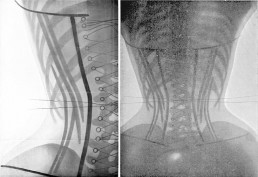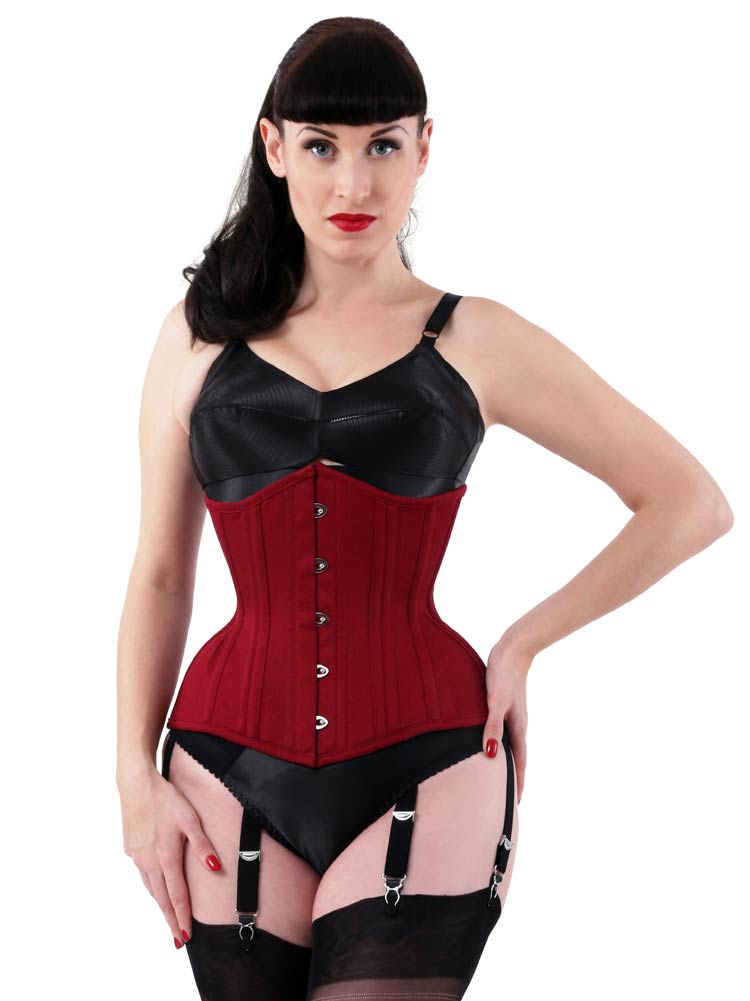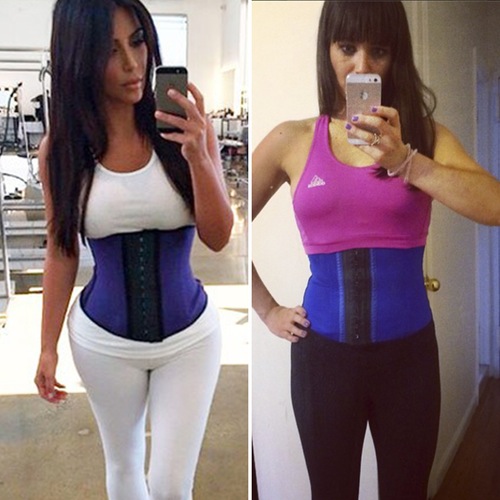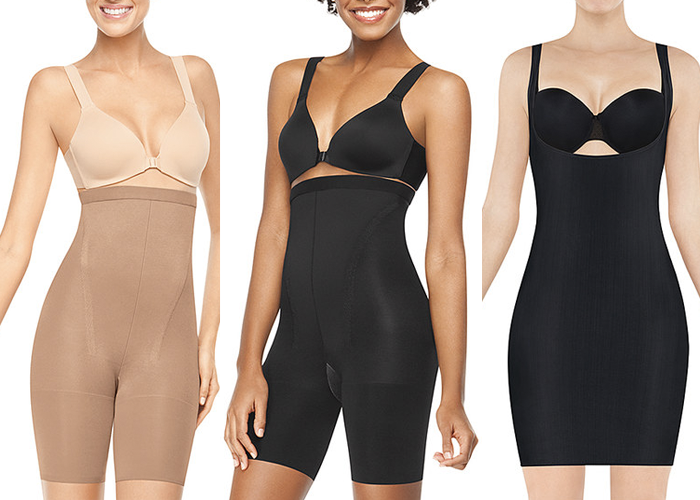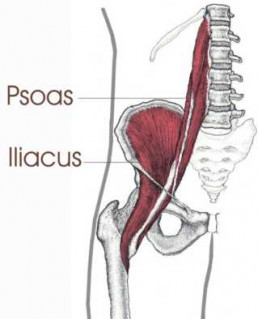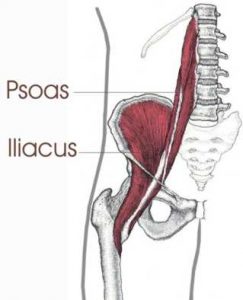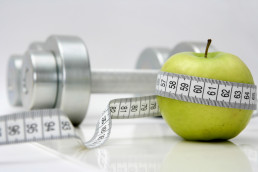The Truth about Waist Training
Waist training may be the current rage with many celebrities who are trying to look thinner, but using corsets to modify the human silhouette can be traced back hundreds of years. However, while true corset training is a legitimate form of body modification, the "corsets" that celebrities are peddling are nothing more than Instagram snake oil. Dita Von Teese, international burlesque star and corset expert, agrees that the contraptions that celebrities are wearing aren't effective. “I think it’s funny because I’m watching and it’s like the blind leading the blind,” she remarked on HuffPostLive. “People that actually know a lot about corsetry are not the ones that are publicly speaking about it, and I’m seeing some of these corsets that they’re saying are waist shapers and I’m like, ‘That doesn’t work.’ They’re like stretchy fabric.”
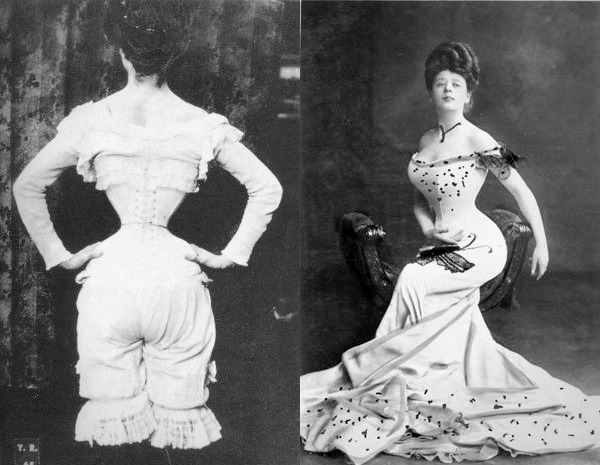 True corset training is actually one of the oldest forms of body modification. It requires a steel boned corset made from stiff fabrics that is made to fit a person's custom measurements. Continuous wearing of such a corset, and gradual tightening over many months, eventually compresses the person's floating ribs (thats the bottom two ribs on the ribcage) and creates a smaller waist measurement. The results can be very dramatic, but it is not a permanent change. The floating ribs will revert back if the subject spends too much time out of a corset. High quality corsets that fit properly are a must because an improper fit can cause problems to the spine and posture.The person is literally changing where things are in their body, so it is not something that should be done without lots of research and advice from health professionals.
True corset training is actually one of the oldest forms of body modification. It requires a steel boned corset made from stiff fabrics that is made to fit a person's custom measurements. Continuous wearing of such a corset, and gradual tightening over many months, eventually compresses the person's floating ribs (thats the bottom two ribs on the ribcage) and creates a smaller waist measurement. The results can be very dramatic, but it is not a permanent change. The floating ribs will revert back if the subject spends too much time out of a corset. High quality corsets that fit properly are a must because an improper fit can cause problems to the spine and posture.The person is literally changing where things are in their body, so it is not something that should be done without lots of research and advice from health professionals.
The recent fad of "waist training" has almost nothing in common with the historical form and for very obvious reasons. All you have to do is compare the corsets. The red is a steel-boned corset made for waist training in the traditional style explained above. The purple ones are the stretchy "corsets" (I will call them "shapers" for the rest of this article) that are being praised by the Kardashians and other celebrities.
You can see that the real corset forces the body to change shape, while the shapers compress the fat but still follow the body's natural line. The corset is made of metal and thick fabric, usually a stiff canvas covered with a prettier material for looks, while the shaper is made out of strong elastic which will bend when pressure is put against it. You can also see that the shapers lack the sewn channels that hold the metal bones that are very obvious on the real corset. Finally, the price. A good steel boned corset that fits well should run you anywhere between $100-$400, while the cheap shapers are being sold on Amazon for as little as $15. As with all things, you get what you pay for.
These modern shapers are basically a different style of Spanx. They will help you look and feel thinner when you wear them under clothes (No shame! I wear shapers with certain cosplays and outfits!) but they will not help you lose fat or make your waist thinner. Some people claim that they lose inches from wearing these, but this is most likely due to the temporary compression that happens whenever our tissue is put under steady pressure, similar to the seam lines you get in your skin when you wear tight jeans. There is no scientific evidence that these elastic shapers have any lasting impact on the body's shape. However, it is possible that wearing these shapers makes people more conscious of their eating habits, which can be very helpful to adjusting food intake and contributing to weight loss. In that way, they may be beneficial.
The internet trend of working out in these shapers is a bad idea. They can restrict your range of motion and restrict your breathing, which increases the chance for injury and will keep you from working to your full potential during a workout. If you can't do a movement or run a distance to the best of your ability you are not going to benefit fully from your fitness plan. There is also evidence that wearing shapers or corsets for extended periods of time regularly may have a negative impact on your core strength since the clothing is holding your weight instead of your abdominal and back muscles. Skip adding these to your gym bag.
There is no magic bullet for losing weight, and while true waist training can give you a more dramatic figure, it does not change your body composition. No type of waist training directly results in fat loss. Your body fat is still there and you are not healthier for getting a smaller waist through body modification. The healthiest way to get a smaller waist is through an informed combination of diet and exercise. If wearing a shaper or a corset makes you feel good about yourself, great, but make sure that you have done your due diligence and have realistic expectations.
Top 5 Moves for Healthy Hips
The hips are one of the most important joints in the human body. Our hips are responsible for supporting our body weight and they are the most important point in our body for maintaining balance and for correcting the alignment of the spine to maintain healthy posture. Hips do a lot!
Unfortunately, most of us aren't very kind to our hips. We spend long hours sitting at desks or on the couch which weakens our hip muscles and starts limiting their mobility. Humans were not made to sit in a chair position for hours on end and most of us don't realize how limited our hip mobility has become until we start trying to get back in shape.
BEFORE YOUR WORKOUT:
1) THE COUCH STRETCH
Do not let the name of this stretch fool you! It is not as comfy as it sounds, but it will do wonders for stretching out your hips and improving mobility. Start with short amounts of time, such as 2 reps of 20 seconds on each leg, then build up as your comfort and flexibility increase.
2) THE HIP OPENER STRETCH
This video has a lot of information! Watch it all! The specific move we love starts at 1:55 and really works wonders to improve mobility.
3) BANDED HIP FLEX
The muscles that flex a joint are called "flexors." This move will help stretch your hip flexors and make prep them for whatever your workout throws at them!
FOR AFTER YOUR WORKOUT:
4) PSOAS MUSCLE RELEASE
The psoas muscle is one of our hip flexors. If we constantly contract the psoas due to stress, tension, or sitting for long periods of time, the muscle eventually begins to shorten leading to a host of painful conditions including low back pain, sacroiliac pain, sciatica, disc problems, scoliosis, hip degeneration, knee pain, and more. This awkward looking move helps release and relax the psoas muscles and can combat chronic lower body pain.
5) ILIACUS RELEASE
This super simple move releases the iliacus muscle which is important for flexing the femur forward. Prolonged sitting with the iliacus in a shortened state, or just the lack of stretching over time, can lead to the iliacus adapting to its shortened position and cause many lower body mobility and pain issues. (It is connected to the psoas, so do moves #4 and #5 together!)
Making time for a few minutes of mobility work before and after your workouts can be a game changer! No matter how strong you become, you will not be able to do most movements correctly without muscle mobility. Make these five moves a part of your regular routine and your hips will be healthy and happy!
I wrote this article for the Nerdstronggym.com blog!
April 8, 2015
The First Steps to Getting Fit
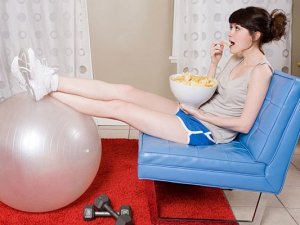 Like most Americans, I've spent a good portion of my adult life playing fitness musical chairs. Weight Watchers, 24 Hour Fitness, yoga, counting calories, workout videos, spinning classes, Barre class, online newsletters, Curves... you name it and I've tried it. Sometimes, I was lucky and got limited results, but none of it stuck or made a meaningful difference in my overall health. This is the trap that we fall into with fad diets, free trials, unrealistic expectations, and short-term goals. So how do we really change our lives and make healthy habits the new norm?
Like most Americans, I've spent a good portion of my adult life playing fitness musical chairs. Weight Watchers, 24 Hour Fitness, yoga, counting calories, workout videos, spinning classes, Barre class, online newsletters, Curves... you name it and I've tried it. Sometimes, I was lucky and got limited results, but none of it stuck or made a meaningful difference in my overall health. This is the trap that we fall into with fad diets, free trials, unrealistic expectations, and short-term goals. So how do we really change our lives and make healthy habits the new norm?
Answer: Be realistic. Brutally realistic.
Step 1: Be Realistic about Your Plan
Most people aren't going to be able to sustain an immediate total overhaul of their lifestyle long-term. The passion of our New Year's Resolutions or fear of the bridesmaid's dress fades, and we go back to  our normal routine. Unless you have superhuman motivation or willpower, you have to be more realistic with your fitness plan and your ability to stick with it. Start off by committing yourself to one lifestyle change and make it something measurable so that you can hold yourself accountable. Remember: It's better to make one permanent change than five changes that you can't sustain.
our normal routine. Unless you have superhuman motivation or willpower, you have to be more realistic with your fitness plan and your ability to stick with it. Start off by committing yourself to one lifestyle change and make it something measurable so that you can hold yourself accountable. Remember: It's better to make one permanent change than five changes that you can't sustain.
For me, it was deciding that I was going to find a way to be physically active at least twice a week. I'll be honest, it was difficult at first. My busy schedule didn't leave much room for anything new, but I could see my body was wasting away from sitting at a desk all day. Movement had to be my first priority.
Step 2: Be Realistic about Your Implementation
This step can also be called "Be Brutally Honest about Yourself."
So I decided that I was going to be active twice a week. Great! Now I had to figure out how I was going to make that happen. That started with really looking at what had caused me to fail so many times before. Why hadn't I been able to stick with anything? I warn you, this isn't always a flattering experience, but being TOTALLY honest about yourself allows you to make a plan that you can actually stick with.
On reflection, I found that I am a cheapskate, unwilling to drive very far, competitive, unable to change my work schedule, need an authority figure (coach/teacher) to please, and am motivated by the opinions of my peers. Super confidence building, right?
But seriously, each one of these things contributed to my previous failures. I'd join a yoga studio when they had a half-priced deal and then quit when the price changed to $200 a month. I'd try "do it yourself" programs (Weight Watchers online, workout videos, and online newsletters) or mega gyms (24 Hour Fitness) because they cost less, but I was just a credit card number to them and there was nobody to coach me, cheer me on, or hold 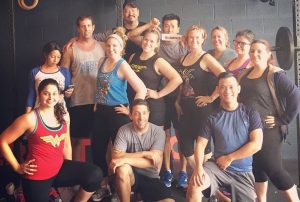 me accountable. I'd sign up for some trendy new fitness class only to find myself unable to make it to their limited class schedule (the spin class), be discouraged because of an inconvenient drive (Barre class), or find that I wasn't being challenged (Curves). After making my new plan, I went looking for a gym that worked with all my faults - er, personality quirks - and eventually found one that was the perfect fit for me. I really feel that is why, nine months later, I have successfully gone from going to the gym twice a week to going four to six times a week and am LOVING IT. (Shameless plug: NerdstrongGym.com)
me accountable. I'd sign up for some trendy new fitness class only to find myself unable to make it to their limited class schedule (the spin class), be discouraged because of an inconvenient drive (Barre class), or find that I wasn't being challenged (Curves). After making my new plan, I went looking for a gym that worked with all my faults - er, personality quirks - and eventually found one that was the perfect fit for me. I really feel that is why, nine months later, I have successfully gone from going to the gym twice a week to going four to six times a week and am LOVING IT. (Shameless plug: NerdstrongGym.com)
Your implementation may not be a gym. Maybe it's joining a softball team, or signing up for dance classes. Maybe it's prepping your weekly lunches on Sunday so that you don't have to think about it before work or starting a salad club at your office. Maybe it's finding a workout buddy or getting a personal trainer. The possibilities are endless! Be creative, but be true to yourself. Don't be afraid to try something, evaluate, and then switch to something else if it isn't working for you.
Step 3: Be Realistic about Your Expectations
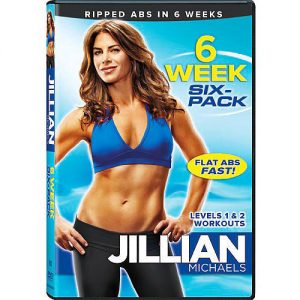
The media has poisoned us into thinking that impossible results are the norm. We see infomercials with insane before and after pictures, celebrity exercise videos that promise to completely change us in a few weeks, and magazine ads for diets and supplements that will melt away our woes for a credit card number. DON'T BE FOOLED! These things are designed to make us feel inadequate and like fitness failures because they are trying to sell us crap. The fitness market is a multibillion dollar industry that DOESN'T WANT US TO SUCCEED, because once we are in shape we will stop buying what they sell. The worst part is that their tactics work. Our self-confidence plummets and we start looking for the next miracle elixir that will fix us NOW.
Real fitness improvement takes time and dedication. We are talking months or years, not days or a few weeks. Keep your expectations realistic! Stay patient, and keep at it! Do not give up!
![]() My trick for staying motivated has been keeping track of my progress in multiple ways. Recording my improvements at the gym (weight lifted, number of reps, speed) has been my #1 measure, followed by body measurements and clothing size/fit. Our bodies change and fluctuate based on tons of factors. Multiple measures mean that I constantly see progress in some aspect of my fitness, even if some measure plateaus or regresses. This strategy really works for me and has helped keep me motivated through my holiday "setbacks"! Just make sure it is something quantifiable so that your progress isn't subjective. Running farther without walking, dancing for more songs, lowering your cholesterol level, waist and arm measurements - there are so many things you can track! Be sure to keep a written record of whatever your measures are so that you can really see your progress!
My trick for staying motivated has been keeping track of my progress in multiple ways. Recording my improvements at the gym (weight lifted, number of reps, speed) has been my #1 measure, followed by body measurements and clothing size/fit. Our bodies change and fluctuate based on tons of factors. Multiple measures mean that I constantly see progress in some aspect of my fitness, even if some measure plateaus or regresses. This strategy really works for me and has helped keep me motivated through my holiday "setbacks"! Just make sure it is something quantifiable so that your progress isn't subjective. Running farther without walking, dancing for more songs, lowering your cholesterol level, waist and arm measurements - there are so many things you can track! Be sure to keep a written record of whatever your measures are so that you can really see your progress!
Please note: Weight is an unreliable measure of progress. I am working to cut off my relationship with the scale because it doesn't truly measure fitness or health. You can get stronger or lose inches and still weigh the same or more! I suggest that you don't use weight as one of your measures!!
Knowing what path to take is the most important part of any journey. Fitness is no exception. The latest fad or what worked for your best friend may not be your path. Don't be afraid to try different things until you find what works for you. Eventually, my twice-a-week exercise schedule became as routine as going to work, and I was ready to create Kimi's Fitness Plan 2.0. Once your first change becomes the norm, you can focus on taking another step. You can do it!
Have a fitness plan that really worked for you? Help your fellow geeks by sharing your experience in the comments below!
